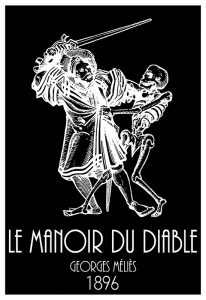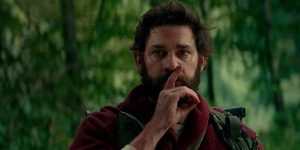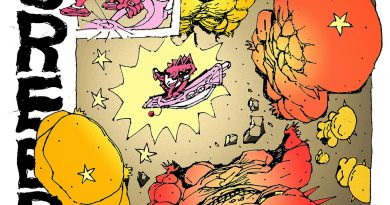Horror Through the Decades (Pt. 1)
Let me put this out into the ether for a second, we are fans of horror movies and the genre as a whole. This piece iss just a quick look at the evolution of the genre and popular films during that time. IF there is any genre that has changed as much just as much as horror has and you think we should cover it, let us know in the comments!
Origins: The Birth of Horror
 Horror as a concept has a rather interesting past and we wouldn’t expect anything less from the genre. On a broad spectrum, horror classifies any creative work the incites fear for entertainment purposes of satisfaction. With its broad meaning, there are plenty of splinter branches and tangents within the genre itself which we hope to detail as many significant eras below as possible. The first director to classify themselves under horror was French filmmaker Georges Méliès, who was a general pioneer in the industry at the time. Georges created his short film Le Manoir du Diable in 1896, and is credited by some as the first horror film. Horror is influenced by the works of Bram Stoker, Mary Shelley, and Edgar Allen Poe just to name a few.
Horror as a concept has a rather interesting past and we wouldn’t expect anything less from the genre. On a broad spectrum, horror classifies any creative work the incites fear for entertainment purposes of satisfaction. With its broad meaning, there are plenty of splinter branches and tangents within the genre itself which we hope to detail as many significant eras below as possible. The first director to classify themselves under horror was French filmmaker Georges Méliès, who was a general pioneer in the industry at the time. Georges created his short film Le Manoir du Diable in 1896, and is credited by some as the first horror film. Horror is influenced by the works of Bram Stoker, Mary Shelley, and Edgar Allen Poe just to name a few.
into the 1920s, German Expressionism played a major role in the continued evolution of the genre. Robert Wiene’s The Cabinet of Dr. Caligari was a major success for the genre as a whole on both the critical and commercial fronts.
Bring Out the Classics!

Alright Univeral, it is time to make your move. While the term “horror” wasn’t widely used for classification until the 1930s, classic horror films found a rise within Universal’s classic monster universe. Rolling into the 30s horror thrived in theatres around the world once there were monsters to take the physical image of fear. We are looking at you Dracula, Frankenstein, and The Mummy. Horror was an intriguing genre in its growing years, as this was the first time where audiences could put a face to the fear that they were feeling throughout their daily lives. While horror was finally beginning to be widely used, many of the films in this era fall closer under the suspense and science fiction styles.
Emerging into the 40s and 50s, horror found its stride in the world of B-Movies. However, this era of time deserves its own article on the subject.
Let the Slashing Begin!
Slasher films are horror’s bread and butter. While the slasher subgenre found its initial start during the 1960s, between 1978 – 1984 is widely considered the golden age of the genre. If for some reason you have been living under a rock for the past forty years or so and have no idea what a slasher film is, here we are talking about Nightmare on Elm Street, Friday the 13th, Texas Chainsaw Massacre etc…the list goes on and on. Now think to yourself, who would be in the right mind to want to watch a few helpless horny teenagers be murdered casually and with ease? For a sense of sexual pleasure?

An argument exists out on the Internet about why slasher films succeeded commercially, while some have even developed a cult following. Since many of these films have core scenes that are essentially murderer stalking prey, it either appeases humans’ subconscious urges to be in the hunter positions themselves. During this golden age, audiences had a rather displaced and tragic view on pleasure, so these films filled that hole in their hearts…Literally.
Let Us Into Your Mind

Films that examine and play with our minds have often been more intriguing than your common thriller, but why is that? Since the average movie-goer doesn’t understand the inner workings of the human psyche, and psychological horror capitalizes on that. Psychological horror is a rather broad open-ended category as it includes any film that uses mental and psychological states to scare and disturb their audience. Films in this subgenre utilize the concept of dread, as well as humans’ innate fear of the concept, to achieve maximum horror results. Many modern-day tropes in other genres derive from psychological horrors such as an unreliable narrator, emotional trauma, and mental disorders.
Gore, Torture, Death, What Else?
Oh now we are in my personal wheelhouse, and I can’t believe I’m going to admit that in this article. Originally finding an initial surge in the 1950s and 60s under the Splatterhouse umbrella, we are taking a look at its resurgence in the late 90s – 2000s. Now known as “Torture Porn”, we are finally now in my ballpark where i learned about the horror genre in depth.

Torture porn films are often criticized as being completely over the top in gore, violence, and sadism, but what do you expect? Torture porn takes elements from both the Splatterhouse and Slasher genres, amping up to eleven to shock audiences and push the line of acceptability. As a minor horror subgenre, torture porn is actually quite commercial successful. Let by such franchises as Eli Roth’s Hostel, Rob Zombie’s The Devil’s Rejects, and Saw; I’m personally surprised that the style didn’t last longer than just a few years. However, this genre created some of the best modern forbidden films that no one should ever watch. When you’re free, definitely don’t look up Antichrist or A Serbian Film…just don’t.
Our Existential Dread…Now on Video.

As horror grew and evolved over the years, film production styles were forced to adapt. One of the most notable styles in the last two decades is “Found Footage”, or using the cameraman as a main character in the story and shot from their perspective. Originally gaining notoriety due to its use in The Blair Witch Project, found footage is a style that helps amateurs and professionals make their films more immersive. This style is meant to be rawer and more “authentic, mainly because the camera movements and cinematography are shakier and more natural within the frame. “Found Footage” is most commonly used among lower budget horror films such as [REC], Cloverfield, and Paranormal Activity.
if you are interested in the “Found Footage” style being used in other genres, check out this quick list below:
- Science Fiction: Project Almanac, Chronicle
- Family: Earth in Echo
- Comedy: Project X
We Don’t Need All of Our Senses.

If we take a look at the horror genre just in the last few years, the latest trend leans to incorporate sensory deprivation. Losing the use of one of your primary senses is a life-altering experience, and this fear is only enhanced when combined with a horrific and traumatic experience. John Krasinski’s A Quiet Place made a splash among audiences and critics with their expert utilization of sound, robbing their characters of this necessary skill and surprising audiences worldwide.
However, Netflix took this as a challenge and released Birdbox, this time focusing on the removal of sight instead of sound. Since humans naturally trust their sight too much anyway, this heightened the Birdbox experience tenfold. A rather mediocre horror film turned into a global phenomenon (definitely not on the merits of the film alone and not because of Netflix’s reach)! People were even trying the Birdbox challenge, willingly blindfolding themselves to experience life in this horrific world. This feature is becoming more and more prevalent in recent years, we hope that this trend continues throughout 2020.
As the Wheel Turns…2020 on the Horizon
As the decade comes to a close and 2020 keeps edging its way over the horizon, what type of horror do you think will rise to the top? Personally, the combination of psychological horror and mythical haunting in films like The Babadook and It Follows restored my faith in the genre, and I hope to see more films expand on the concept. With A Quiet Place 2 also pushing itself to the top of the list, horror in 2020 looks promising.

Are there any other projects/music/movies that you want us to check out? Let us know in the comments!

Who am I? Just some guy who decided to start writing on the Internet years ago and now operates his own brand and site. Owner/Operator of Modern Neon Media, I make all kinds of niche content to suit my interests at the time. DIY Enthusiast, Brewmaster extraordinaire, and avid freak for geek culture. Follow on my socials for a more “on” version of me.





Your style is so unique compared to many other people. Thank you for publishing when you have the opportunity,Guess I will just make this bookmarked.2